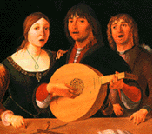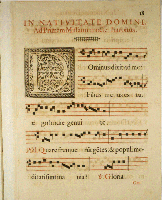 A common exercise for improvisers is to practice scales, and these do not
have to be limited to the major and minor scales. Learning other scales
expands your resources for improvising and composition.
A common exercise for improvisers is to practice scales, and these do not
have to be limited to the major and minor scales. Learning other scales
expands your resources for improvising and composition. A common exercise for improvisers is to practice scales, and these do not
have to be limited to the major and minor scales. Learning other scales
expands your resources for improvising and composition.
A common exercise for improvisers is to practice scales, and these do not
have to be limited to the major and minor scales. Learning other scales
expands your resources for improvising and composition.
There are MANY different kinds of scales and tuning systems, some of which are quite exotic. Trying some out and practicing your favorites will open your ears and expand your vocabulary.
 The
classification of the modes was worked out to describe medieval Gregorian
chants and are therefore referred to as "church modes". They
can be learned in two ways.
The
classification of the modes was worked out to describe medieval Gregorian
chants and are therefore referred to as "church modes". They
can be learned in two ways.
![]() First,
you can remember them in terms of the key signatures they use. The dorian
mode is like starting a major scale on the second degree. D dorian
therefore has the same key signature as C major, since "D" is the
second note of the C major scale. F dorian would have the same key
signature as Eb major:
First,
you can remember them in terms of the key signatures they use. The dorian
mode is like starting a major scale on the second degree. D dorian
therefore has the same key signature as C major, since "D" is the
second note of the C major scale. F dorian would have the same key
signature as Eb major:
There are seven modes, two of which you may already be familiar with by other names:
There is a mneumonic aid that can be used to remember the order of the modes:
I don't punch like Mohammed Ali
I(ionian) d(dorian)on't p(hrygian)unch l(ydian)ike M(ixolydian)ohammed A(eolian)l(ochrian)i
![]() The
second way to learn modes is to know what degrees have been modified
relative to the major scale. This is indicated using the numbers with
"+" or "-" signs written underneath the pitches in the
following examples.
The
second way to learn modes is to know what degrees have been modified
relative to the major scale. This is indicated using the numbers with
"+" or "-" signs written underneath the pitches in the
following examples.
©2000 Robert Willey